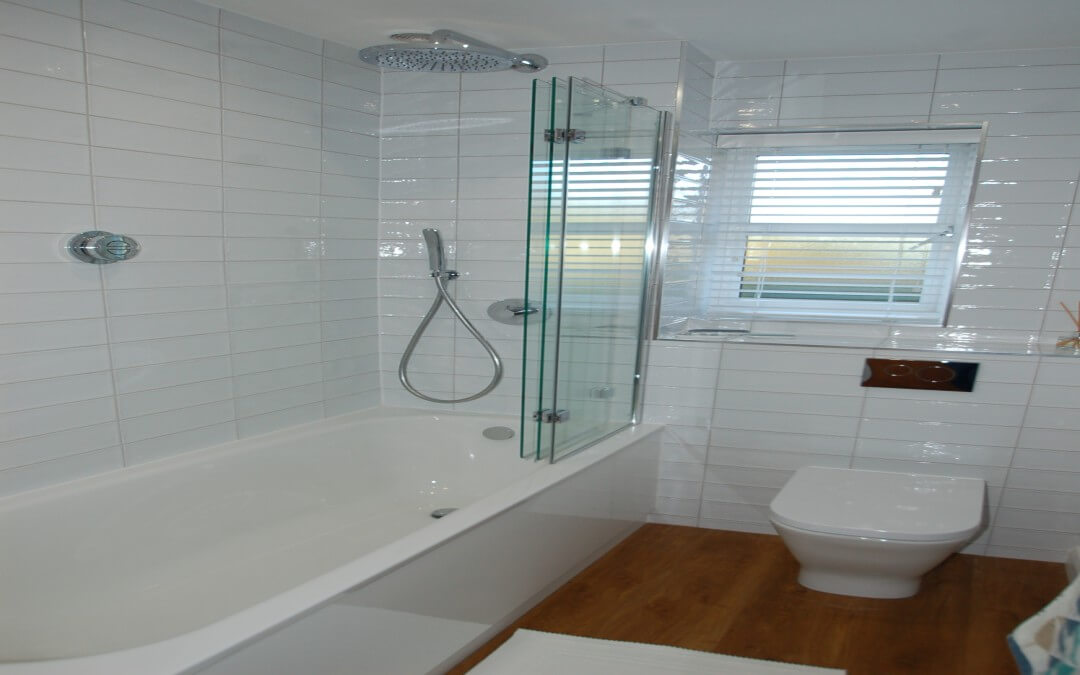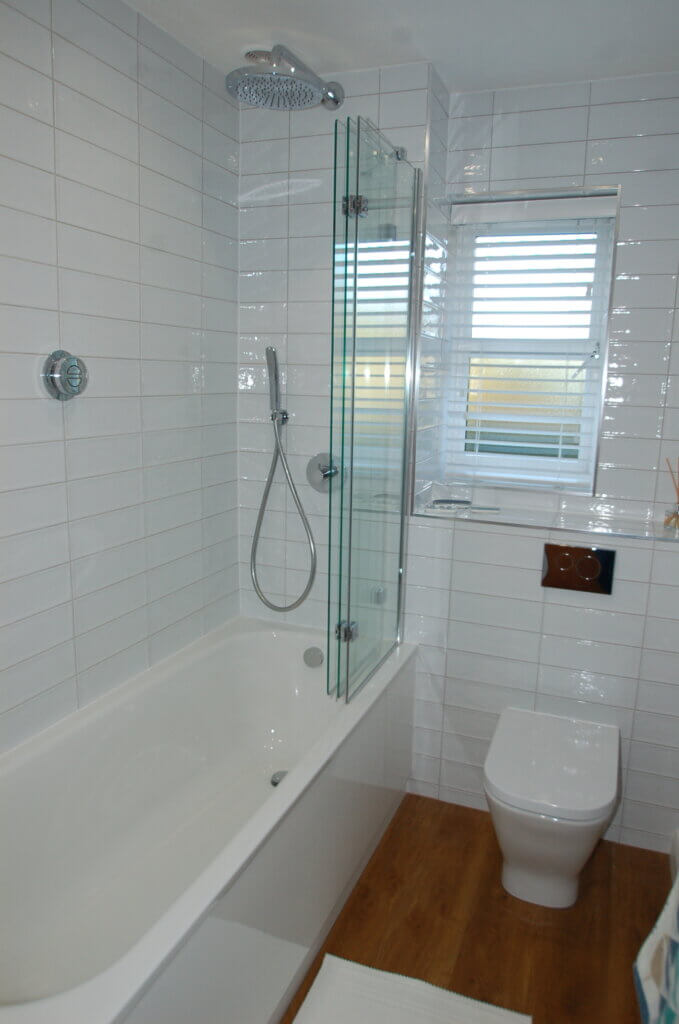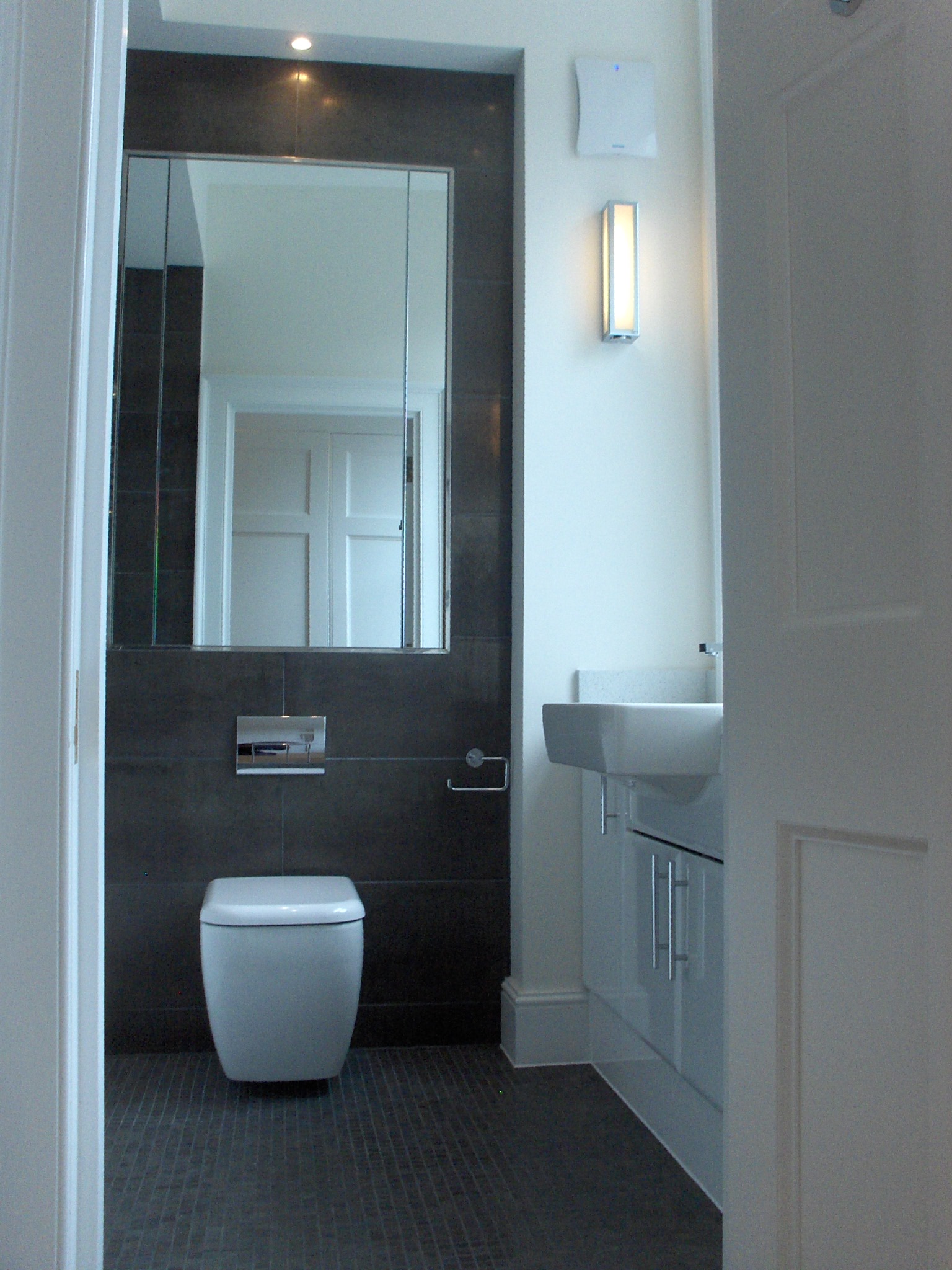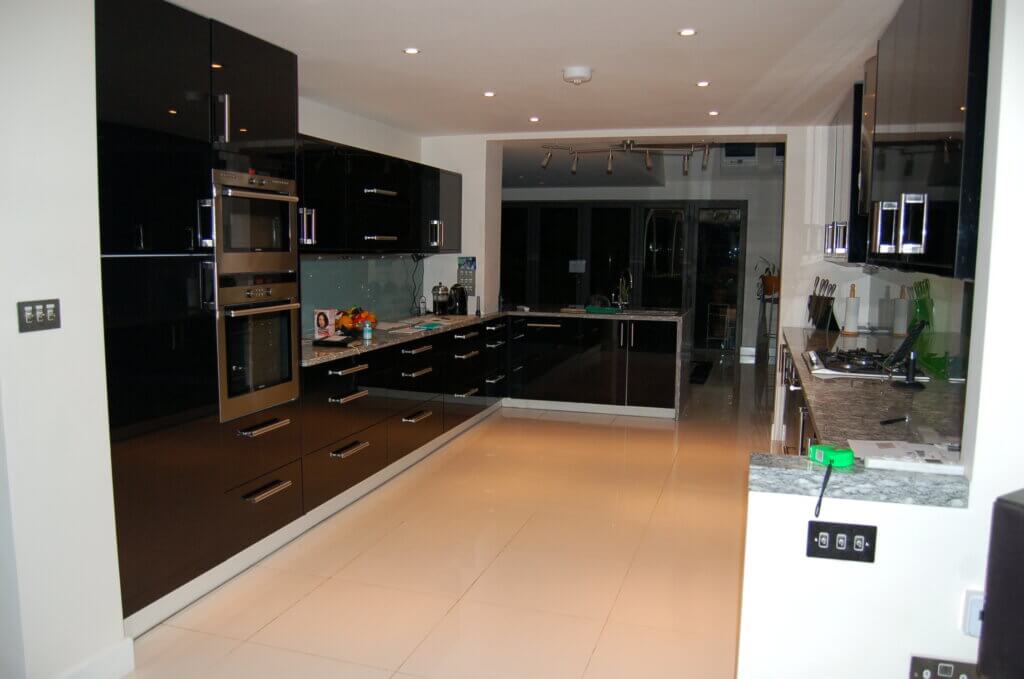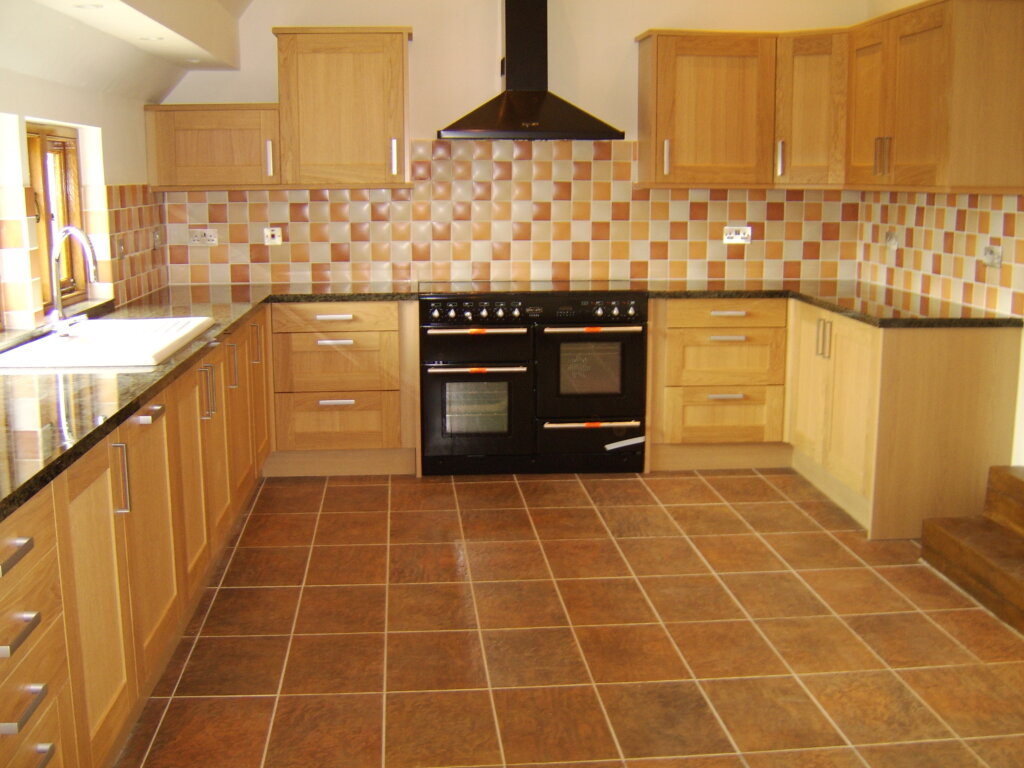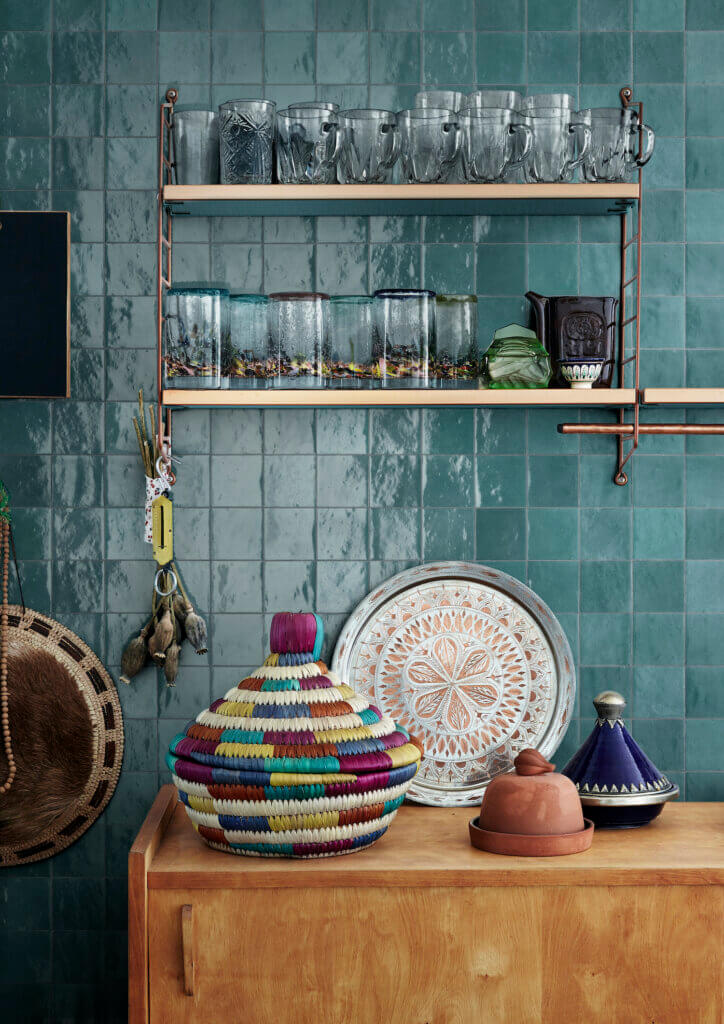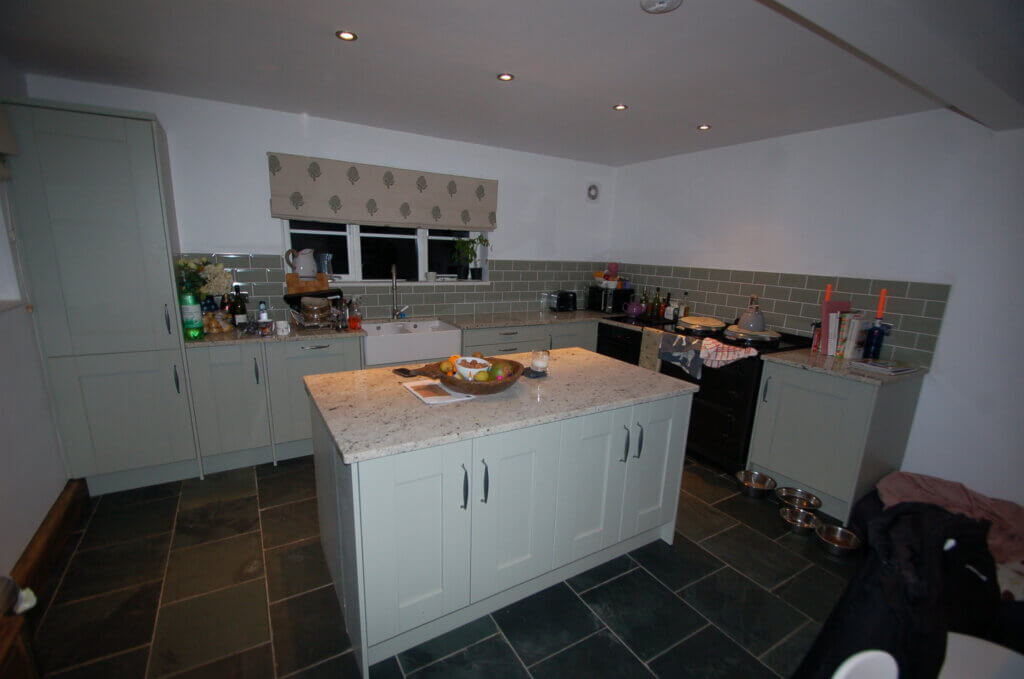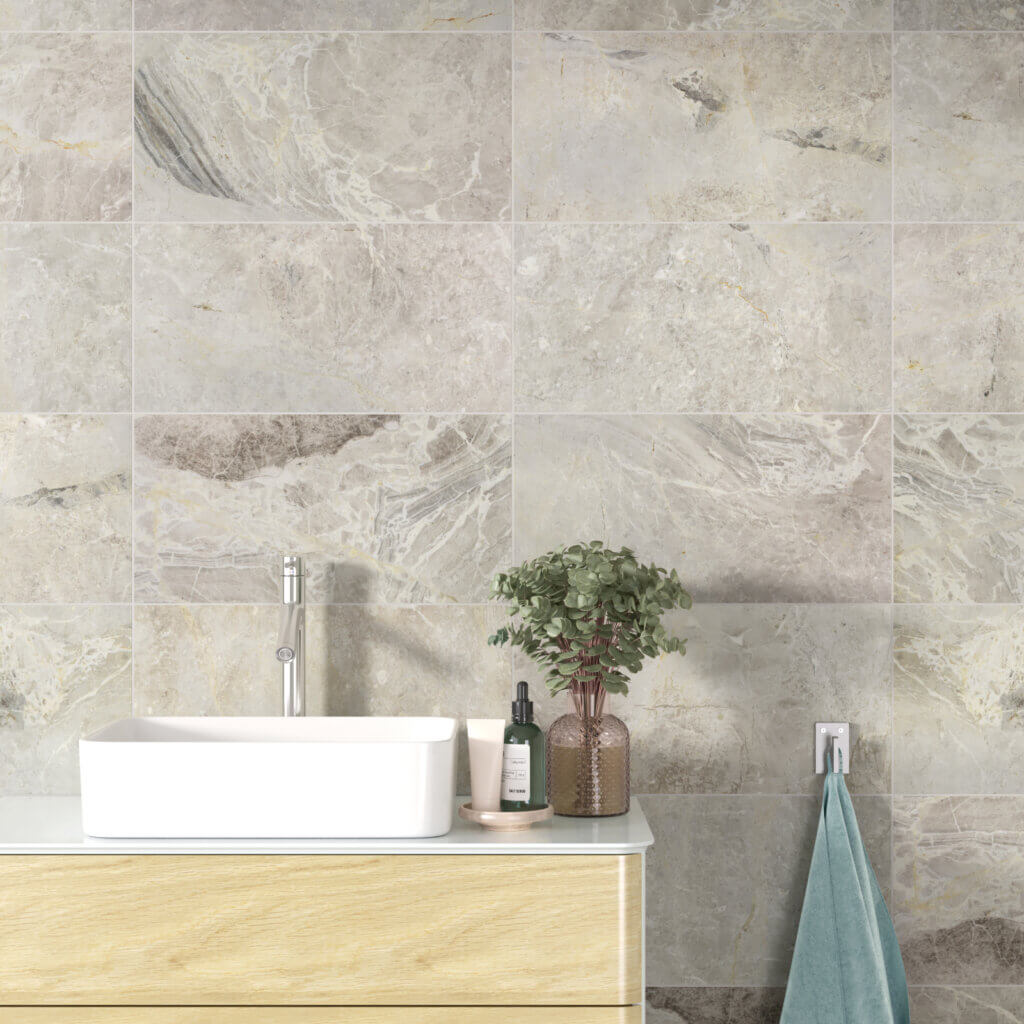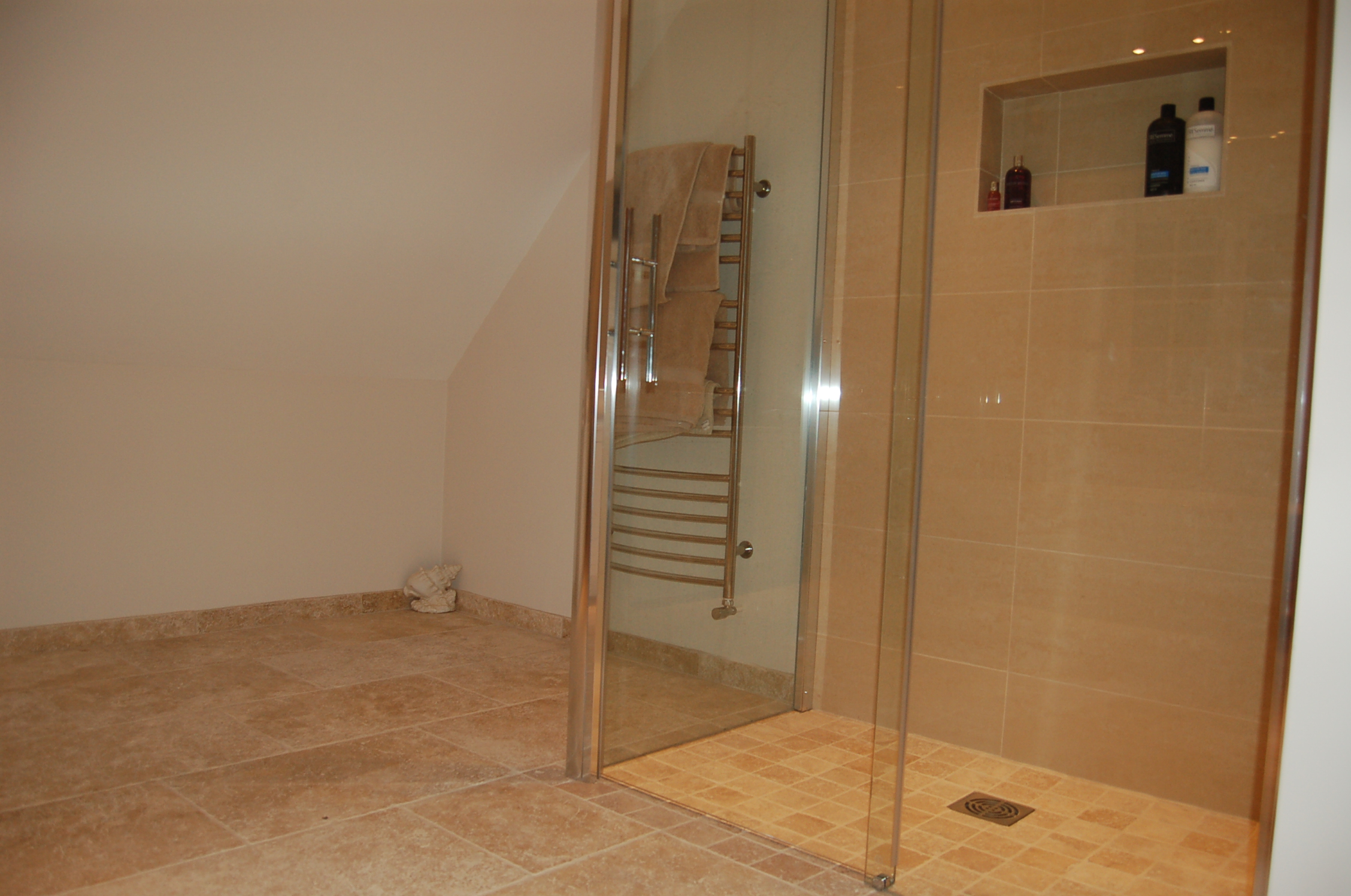The latest tile ideas and tile trends, certainly show a demand for tiles that mimic natural stone and timber, cement, metals, and fabrics. These offer all the advantages of a hardwearing, easy-to-maintain, long-lasting tile with the look of a luxury material. Also making a comeback, patterned tiles celebrate the glory of modern, geometric designs and opulent colours.
When it comes to size, large format tiles are increasingly popular and no longer limited to the hallways, kitchens, and bathrooms, where their practical advantages have always been appreciated. More people are tiling their entire ground floor, Open-plan kitchens, a large-format tile used throughout creates a seamless look that unites the whole space.’
1. Ceramic
Produced from a blend of clays, traditional ceramic tiles are pressed into shapes, dried, glazed and kiln fired. Unglazed ceramic tiles are available, too. Many are too ‘soft’ and porous for use on floors, and may crack, chip and stain. Some may also require sealing before and after installation to protect from staining, so do your research before you buy.
The two biggest draws of ceramic tiles are the sheer range of colours and patterns available (which makes them a great choice for, say, a statement kitchen backsplash idea), and their affordability. On the downside, ceramic tiles are not very sturdy; hence they are not suitable for floors since they crack easily when subjected to high pressure and force.
2. Porcelain
Porcelain tiles are made from fine clay mixed with quartz and feldspar, which is fired to 1,200ºC/2,200ºF. This high kiln temperature changes the nature of the clay, causing it to become very hard, almost totally non-porous and resistant to scratching and staining. Porcelain tiles have less than 0.1% water absorption thanks to the source clay and additives. For flooring and for exterior uses this is critical.
Consequently, porcelain is an excellent choice for areas with high footfall – it’s an ideal kitchen floor tile – especially as it does not need to be sealed and usually requires minimal ongoing maintenance, they can also be used in situations when you are bringing the outside inside as they can be installed on patios and kitchen floors combined, being frost free.
The real advantage of porcelain is their wear ability, extremely tough tiles and in some instances come as little as 6mm thick, making them very suitable for underfloor heating.
Their massive eco benefit is that they use about a quarter of the amount of material of a standard tile.
The latest developments in porcelain tile manufacturing, particularly in digital inkjet technology, have made exciting new designs possible. It’s possible to reproduce individually unique tiles that mimic the appearance of marble, limestone, and wood. Inkjet technology also copes beautifully with textured surfaces, which adds further authenticity, and it can be used to produce patterned tiles in a patchwork of styles.
3. Terracotta
This age-old material, with its lovely mellow appearance, is great for creating a rustic look in a kitchen, bathroom, hallway or living room. Soft clay is moulded into tile-shaped frames, dried and kiln-fired, resulting in rich, earthy-red tiles. It’s remarkably long-lasting, so you will be able to find reclaimed tiles easily, though it is always best to go through a reputable supplier so they can source quality pieces on your behalf. As with all stone flooring, terracotta tiles work well with underfloor heating.
Terracotta tiles may be handmade with a natural feel and finish, or machine moulded to give a more consistent result. Untreated terracotta is porous and must be sealed, traditionally with a mix of half linseed oil to half white spirit, followed by a coat of beeswax. Opting for pre-sealed terracotta tiles avoids maintenance issues and they can be used in wet areas, such as bathrooms.
4. Zellige
These handmade terracotta tiles, sometimes called Zellij or Zillij, originate from the ancient Middle East and Morocco. They are made of wood-fired clay or pressed cement, which is glazed with chips of enamel in jewel-like single colours. The elaborate designs usually feature traditional geometric patterns.
5. Limestone
As one of the most popular choices of stone flooring, limestone comes in many variations of colour, cuts, and finishes. It works well both indoors and as an outdoor tile, making it a great option for entranceways and open-plan spaces. Limestone tends to come in lighter, honey tones – and while it is not as porous as the likes of sandstone, it will require a strong sealant, like Stain proof original, and will need to be maintained regularly to avoid premature staining and scratches.
6. Slate
Slate is known for its rusty copper colours, combined with deep shades of charcoal and silver, all of which can work together to create a rustic look, perfect for period properties and quaint cottages. It is important that slate is polished and properly sealed to prevent any chips or staining. When sealing, you can add a colour intensifier to enhance the look, giving a glossy sheen for an even more eye-catching appearance.
7. Encaustic/Cement
Beloved by the Victorians and often used on entrance hall floors, encaustic tiles feature decorative designs that are stamped or literally ‘burnt into’ the clay body. The stamped impression is filled with liquid clay of a contrasting colour and the clays fuse together during firing. As the pattern is not a product of a superficial glaze, but of colours inlaid into the body of the tile, the design will remain as the tile is worn down.
Historically encaustic tiles were often combined with less expensive natural clay quarry (plain square) tiles and geometric unglazed tiles in straight-edged shapes, such as triangles and lozenges. They remain among the most expensive tiles to buy.
8. Marble
Lovers of natural stone have always found something to love in marble, not least because every tile is unique with beautiful veining. This lack of uniformity is one of the main charms of natural marble tiles.
It’s suited to any room, bringing its luxurious good looks to walls, floors, and countertops in a marble bathroom. The cool shades of marble, particularly the whiter tones, create a feeling of openness in the room and help to brighten it up. It helps that expanses of marble remind us of the hotels and villas in sunny Mediterranean holiday destinations, too!
Marble is not as durable as granite, for example, and will scratch and wear over time. This will soften it and give it a patina, but this can be a negative if you like to keep your surfaces pristine. It’s also vulnerable to staining – any spills must instantly be cleaned up. To keep marble protected, it needs to be sealed when installed and resealed every year after that.
The overall cost of marble tiles can be higher than other tile options. This is thanks to the price per tile, as well as the need for professional installation. In addition, the ongoing maintenance and need for re-sealing means there are upkeep costs throughout the life of your tiles.
9. Mosaic
Mosaic tiles can be made from many different materials, including glass, porcelain, and glazed ceramics as well as natural and precious stones. The latest designs mix materials to create interest. Mosaics tend to be a luxury choice, given the amount of work involved in their making, but they offer a unique texture and can be used to break up a large area of flooring and create striking visual appeal.
Mosaics are easy to clean and retain their good looks over time, which is a definite plus point in the bathroom or kitchen. Their non-porous surface is resistant to stains, mould, mildew, and harsh cleaning products.
Mosaic tiles mean a lot more grouting, so we recommend choosing an epoxy grouting, which is superior to the standard variety when it comes to cleaning grout, especially when choosing a lighter-coloured option.

